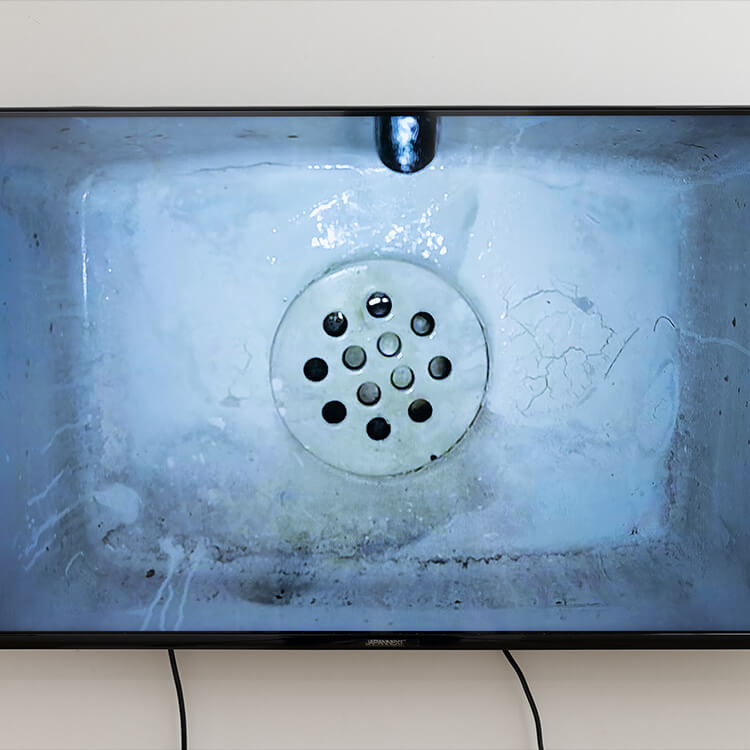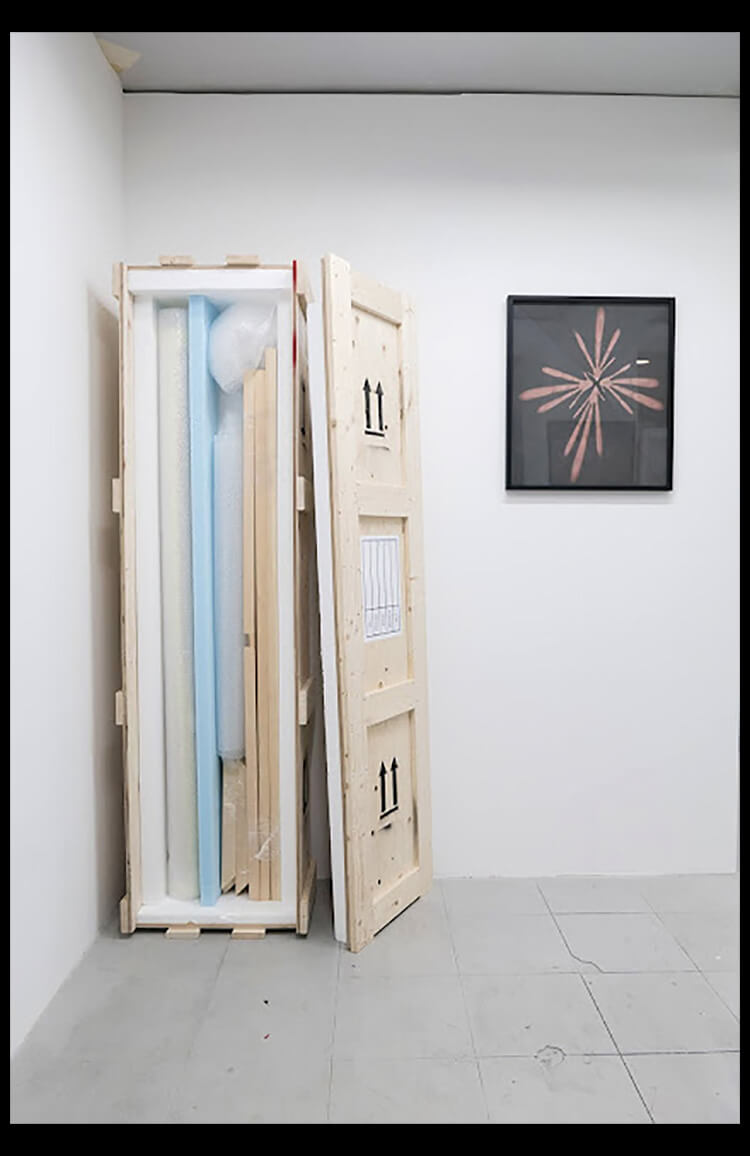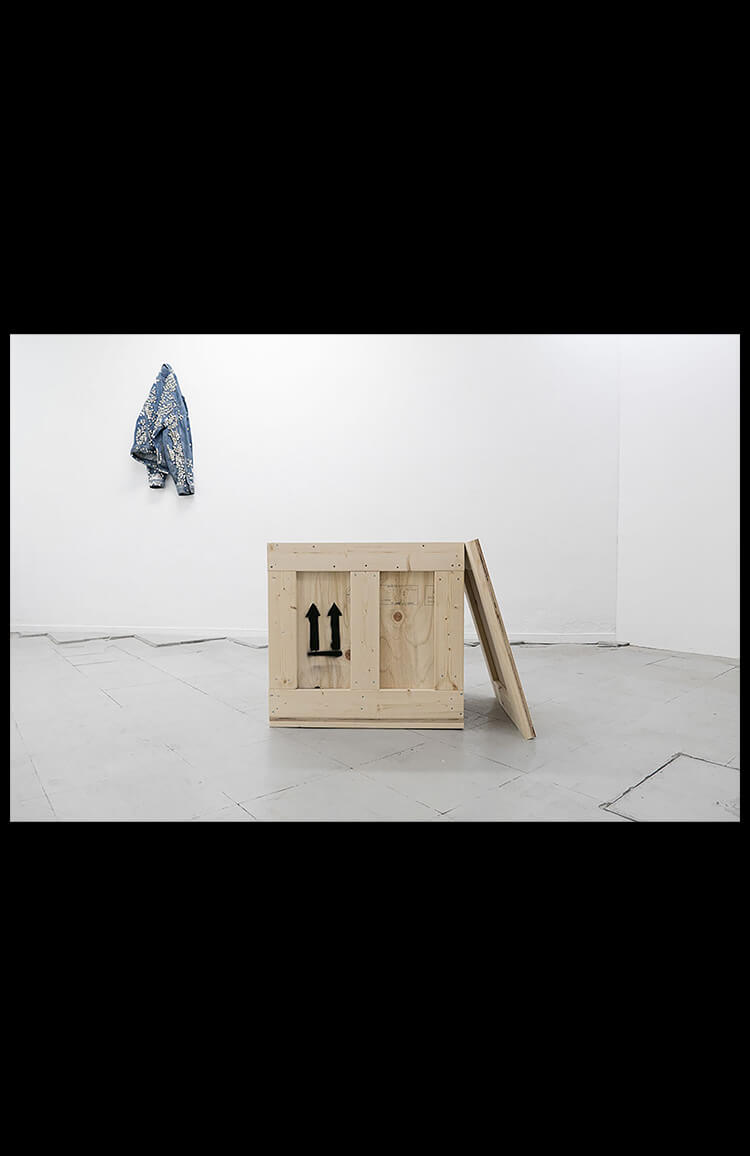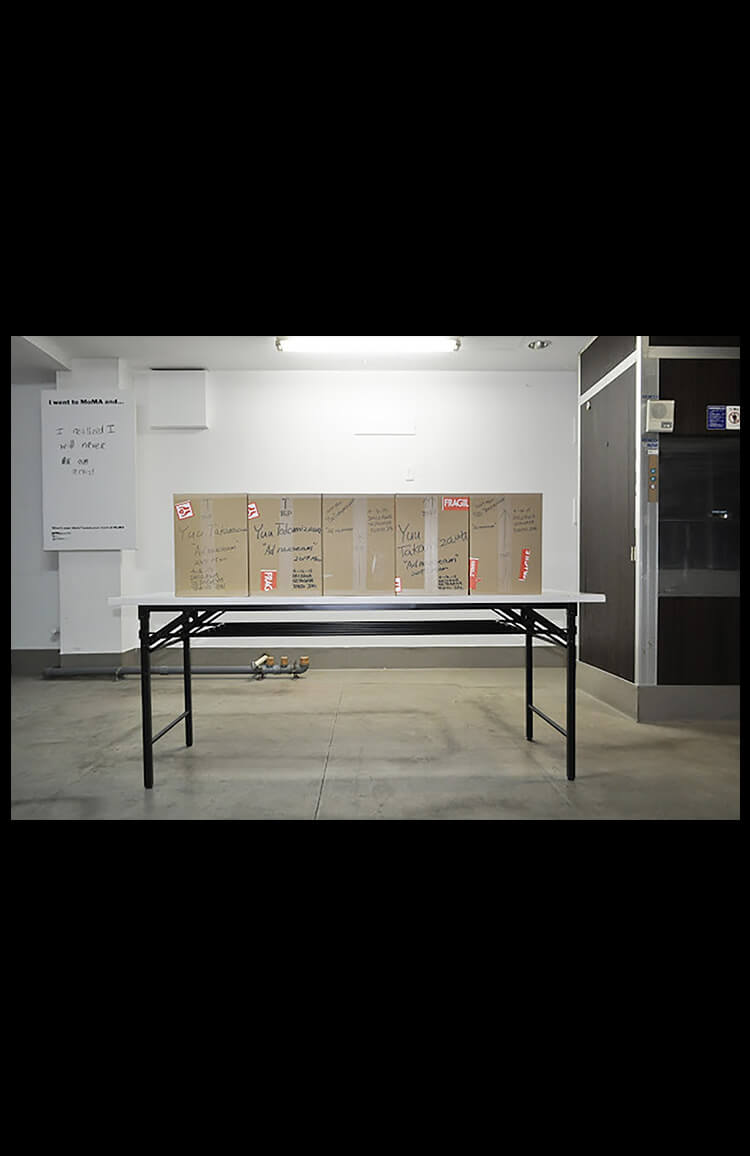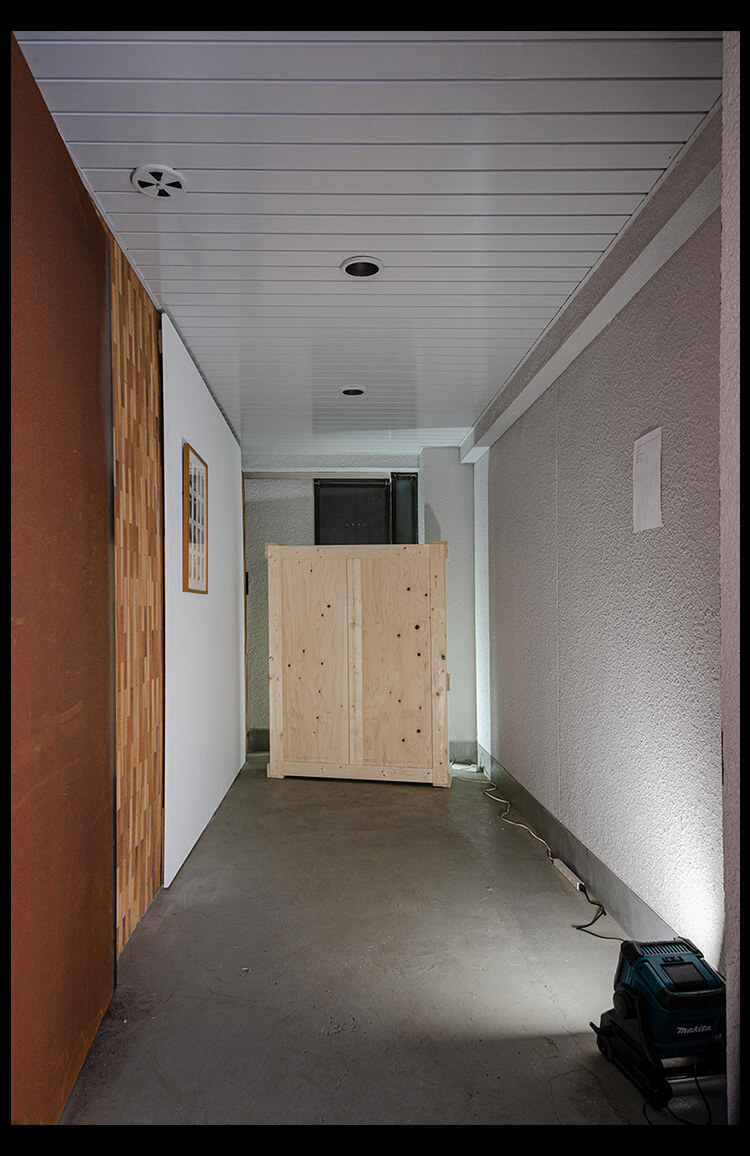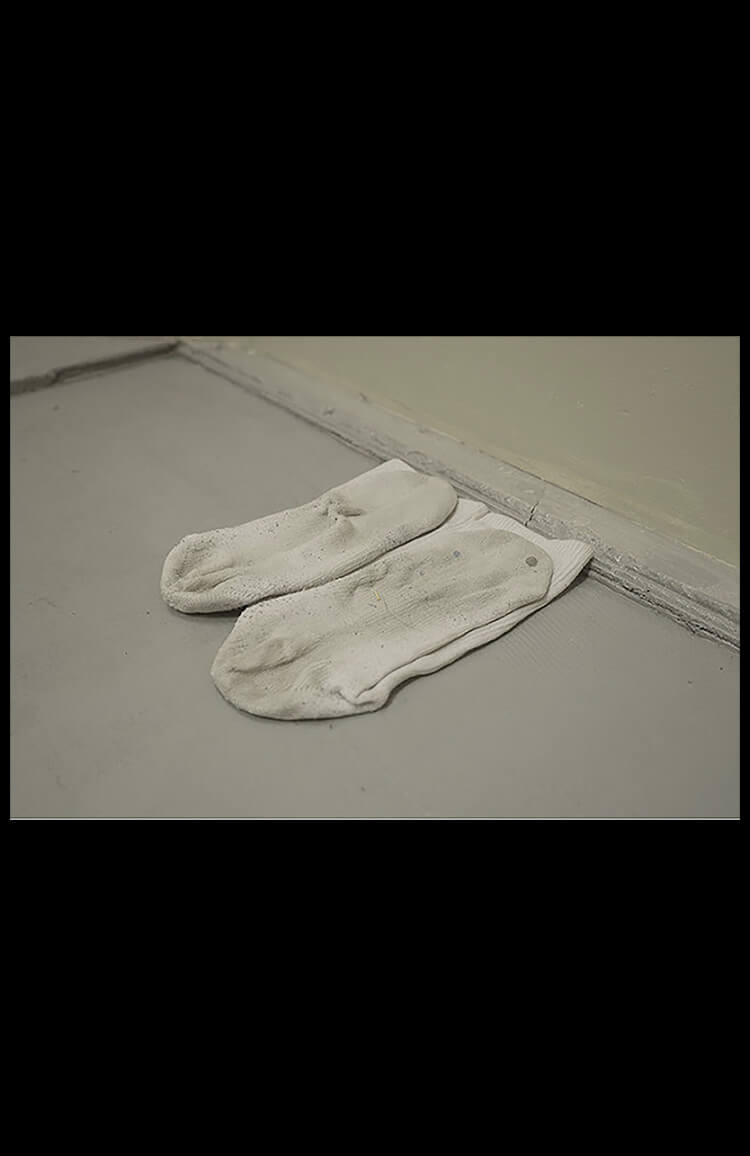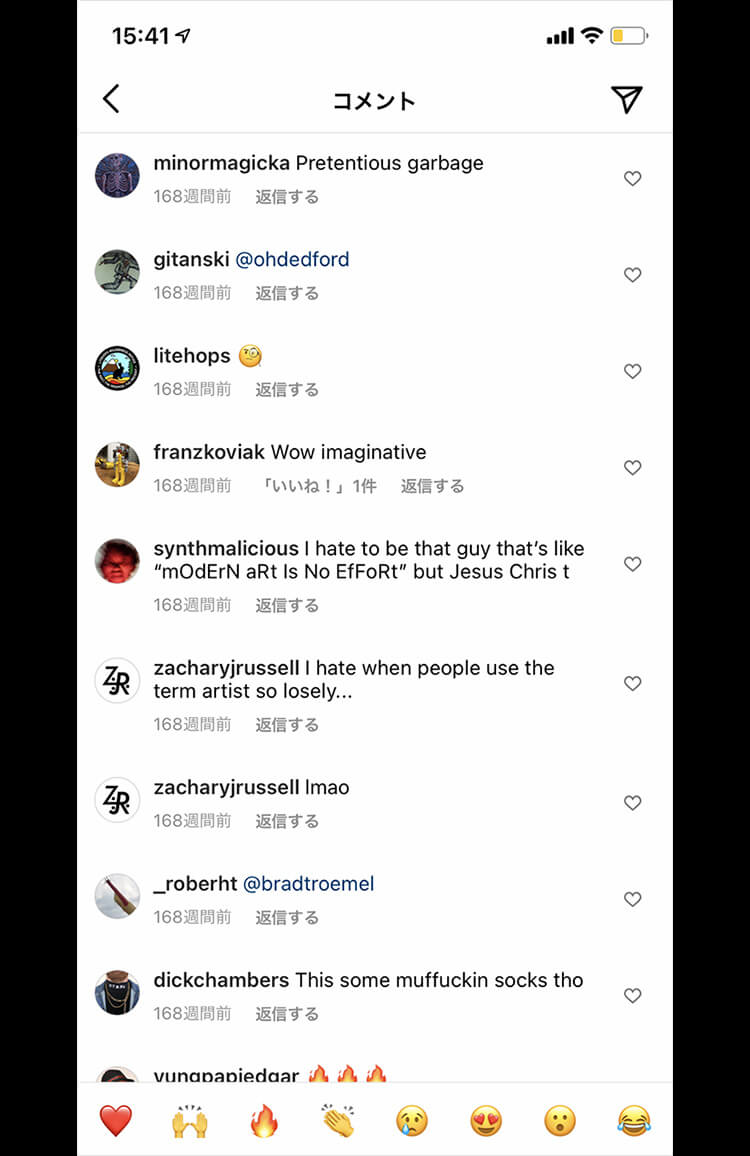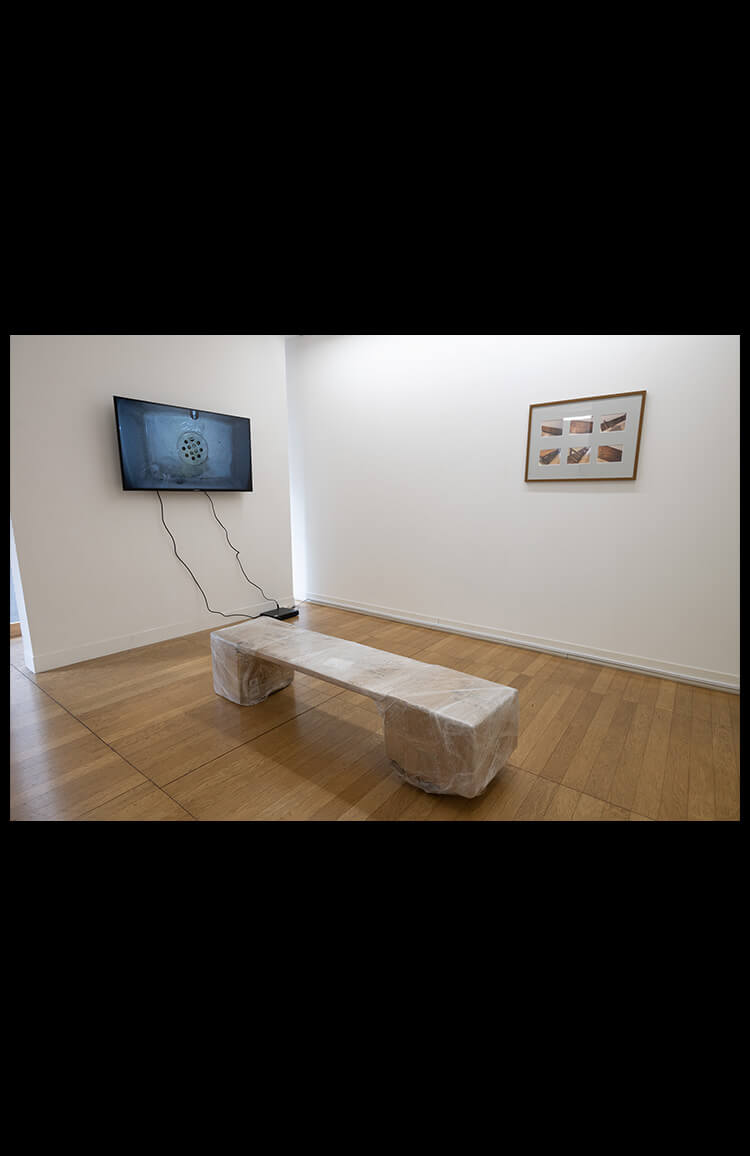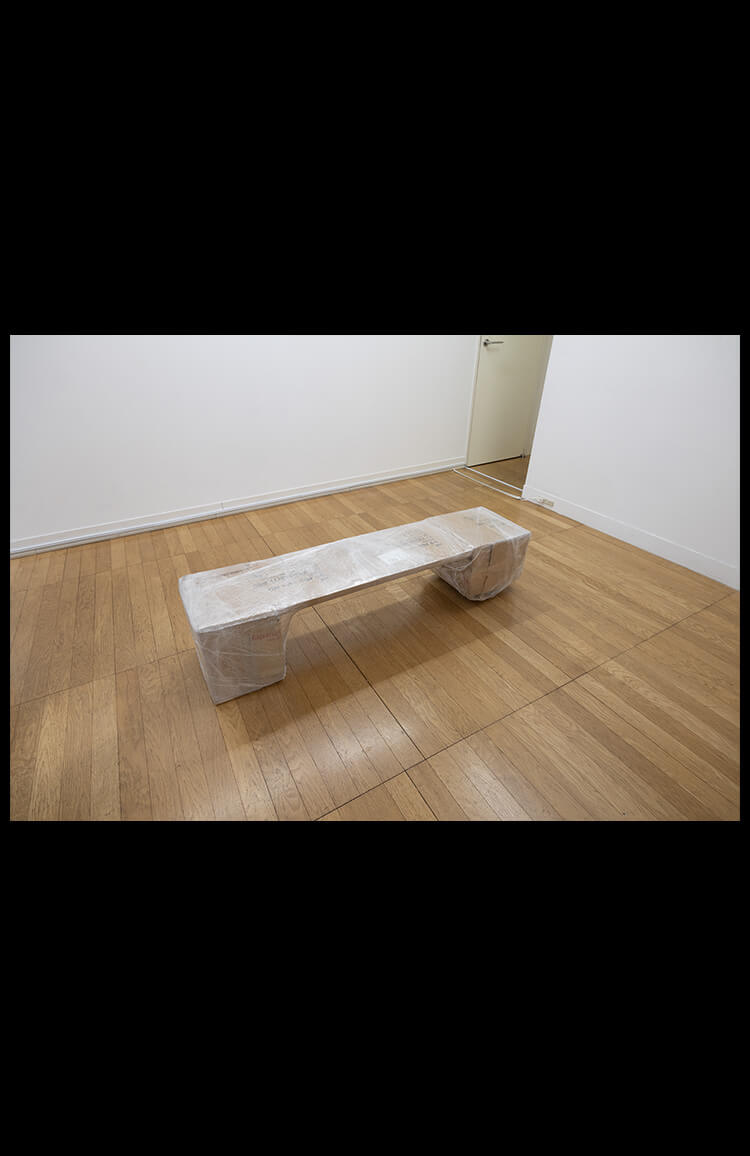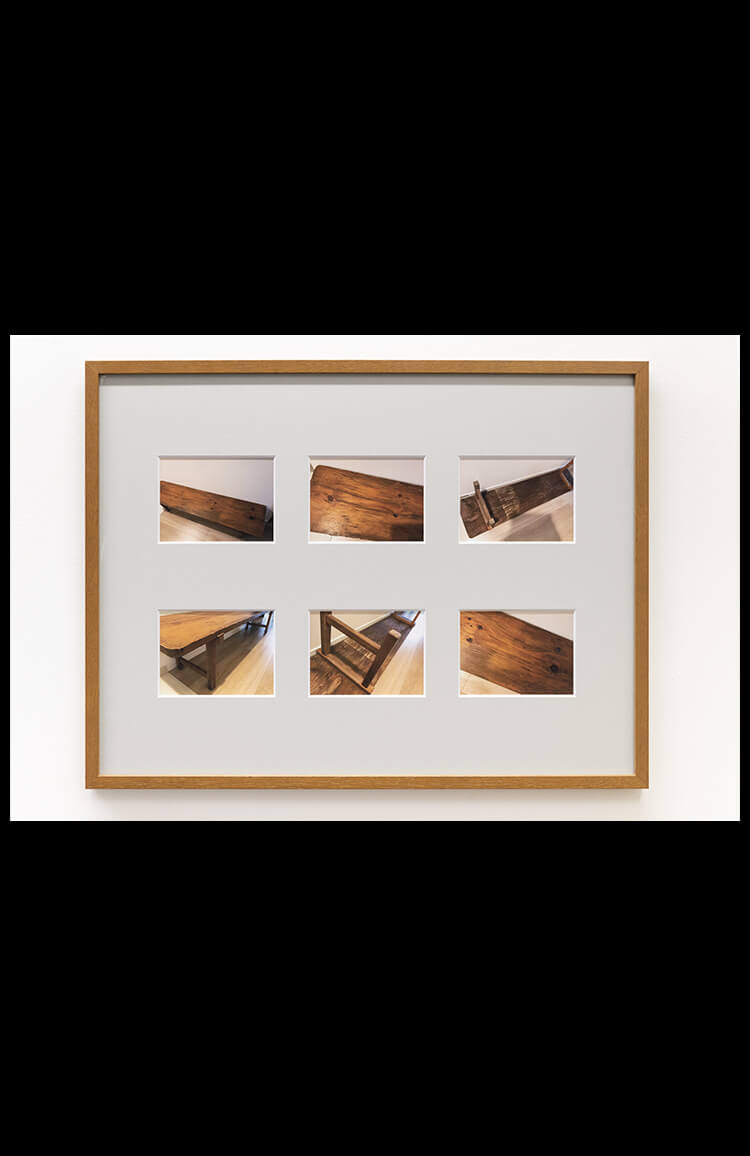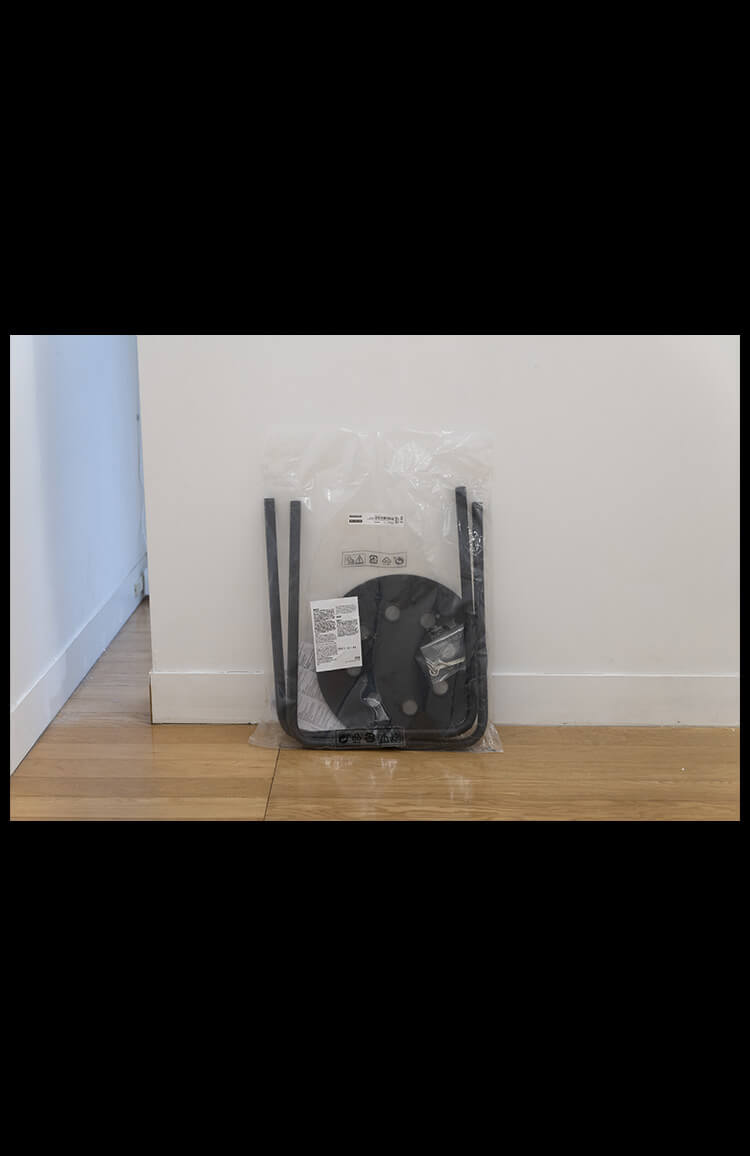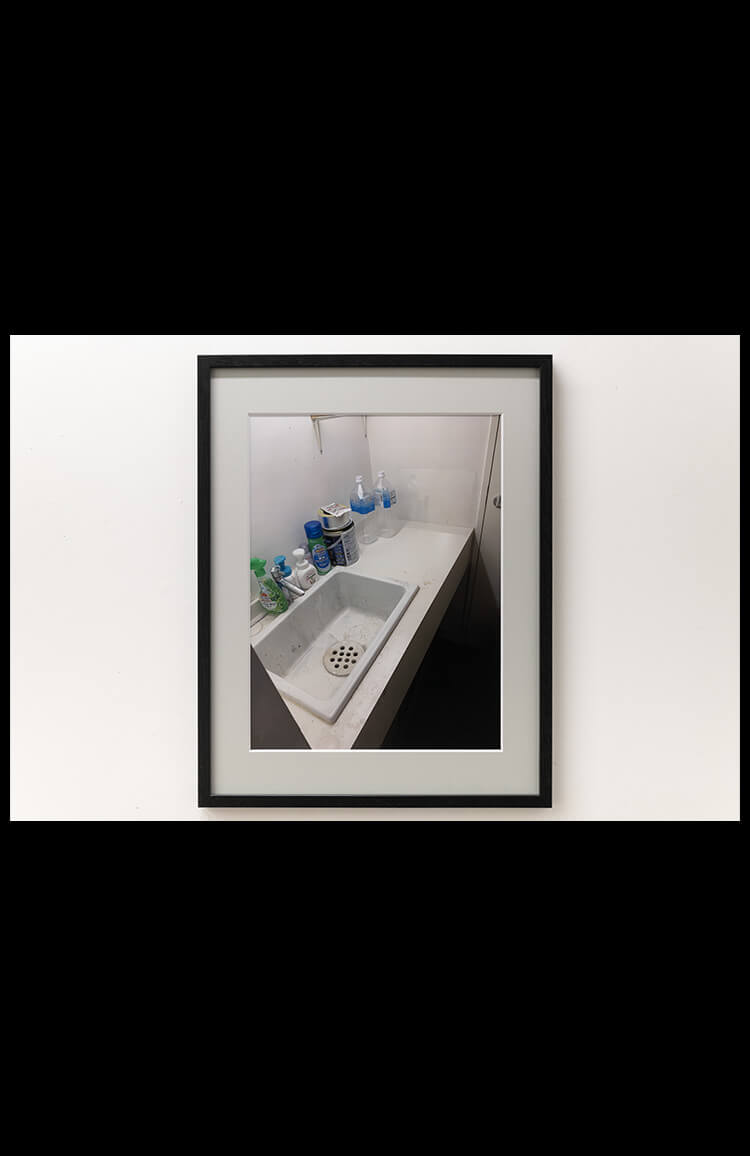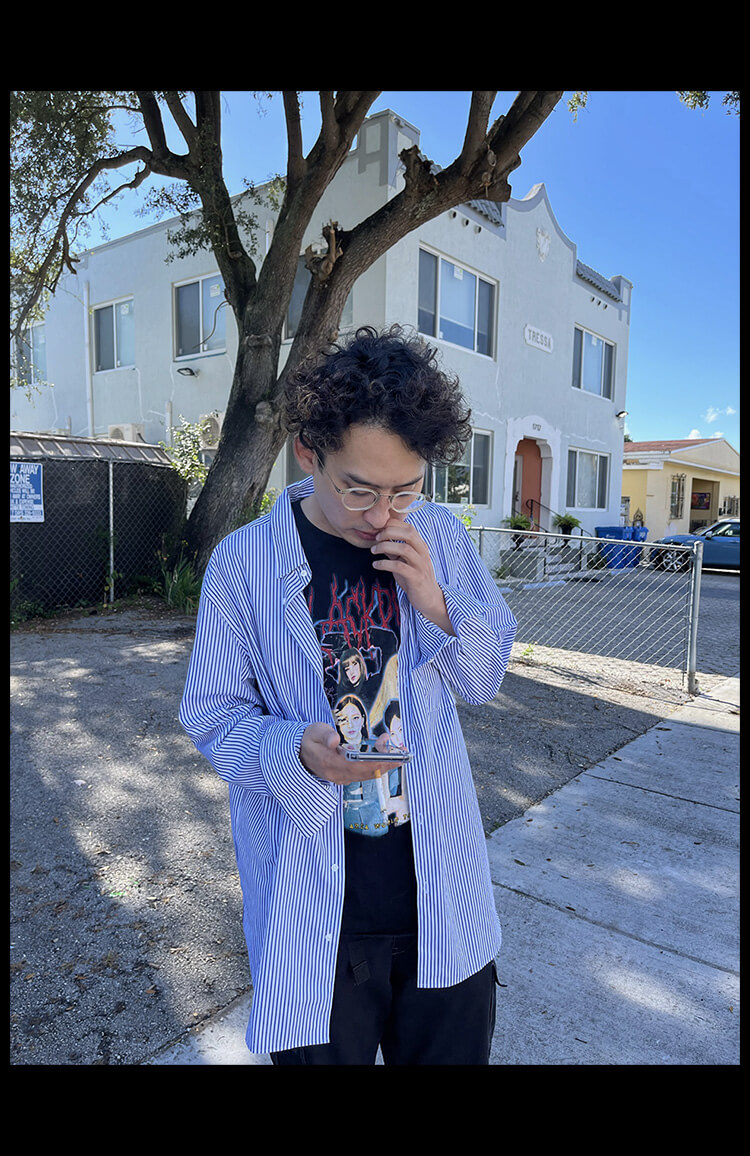IL__I see. Also, I was curious about the sock work. This work seems to have been made in a different context to that of the relationship between painting and light and the context you mentioned earlier. Still, it has been continuously exhibited until now. Are these all the same socks?
YT__No, they are all different socks. While I was working on the crate piece, I accumulated a lot of socks, so I thought I'd exhibit them, but I didn't really think about what the piece meant to me. When the socks piece went up on NADA's Instagram, there were some negative comments about whether this was art or not—I was quite moved by that. It made me feel like it was okay to do this.
I'm making an artwork about a painting or a chair or something that's there, and my work is about thinking, like, "What the hell is this?" There are people who sell art and make art, and this has been passed down through history, and I wonder what that is, too. In a nutshell, my interests are art, and it's about objects, and I'm always thinking about how these two things relate to each other when I make my work. Recently, I reread Greenberg, and those two things came together.
IL__You mentioned earlier that you used to paint abstract paintings, is that because you like abstract expressionist artists? Also, are there any other artists or art movements that have influenced your current work?
YT__No, I don't like them at all. I don't like Mark Rothko or Barnett Newman. I thought they were phonies. But there was an art critic called Michael Fried who got me interested in Greenberg in a sort of backwards way. I'm into people who are generally thought to be wrong in the art world today, such as Fried.
Most of the things I was taught at university and books I read had a bias towards Felix Gonzalez-Torres. For example, in minimal art, Carl Andre and Robert Morris are opposed to Donald Judd. It's a bit one-dimensional to say it like this, but Judd's work is more like Greenberg's or an extension of formalism. But Morris, a minimalist, is talked about as if he were an innovator. It's as if people are saying that Morris is better than Judd in terms of the positive aspect of opening up the body to art that was previously retinal. I also think that in the 70s, there was a strong argument about how Dan Graham was better than Joseph Kosuth. I think it's also because Graham opened his eyes to the outside world rather than artistic concepts... I think that's why he's considered great.
But I'm more interested in Judd and Kosuth, and I like the fact that they're more internal.
IL__Internal?
YT__I mean, open. What I'm trying to say is that in the end, when Robert Smithson and Torres came out, they really opened the world. Torres made people look at their beds and other places. He used his work to lead people to places where they could use their imagination. I think that's great, and I think it was necessary at the time. But I don't like it. It's like, nowadays, everyone is too open, and everything you think and do has to be shareable and redeemable in society, or it's based on empathy. I don't like that kind of thing. Just as an example, Judd and Kosuth went in a direction that only they could understand and that was more self-contained, and maybe that's not a good thing when it comes to art, but I think it's essential. I want to show things that only I can understand. I want to show something that only I know, something that even if the art world disappeared, I might still be making alone.
My work can be done without any preconditions of existence, and I think I'm trying to do what I could do if I lived alone in the future. What is called "conceptual art" nowadays is like the academic art I talked about earlier, where there is a premise, such as a canvas or white cube, and you just replace the content. I'm not sure about that. That's why I'm trying not to make it like that.
Also, Martin Heidegger talked about the remoteness of things, and I thought it was the same as talking about the support in art. What was it...? *Two minutes silence* I can't remember for a second, so never mind.
IL__I'm really curious about what Heidegger said. *Laughs* Let me know if you remember it. One of the pieces you are showing at im labor is a plastic bag with parts of a replica of an IKEA chair. Did you intend not to use a readymade, but made it by hand to avoid being seen as "conceptual art?" For example, when I saw the work of Peter Fischli and David Weiss, I thought it was readymade, but in fact, it was all made.
YT__The chair piece is a reproduction, and the reproduction process is more significant for me. I think, regarding the quality of the reproduction of Fischli and Weiss's work, about 85% remains in a slight handmade texture. I tried to reproduce about 95% of my chair work, although it might be 93% if you see it in real life.
I wanted to make a chair of a moment in time, like the moulded painting I made when I was a student. The chair is always there, and the painting is always there as a still life. But at the moment it is moulded, time is taken away from the painting. I used to do that with paintings, but I don't think it has to be paintings. I just wanted to create a state in which time is taken away from the chair.
IL__Can I ask you about the work you will be showing at your solo exhibition at im labor?
YT__The exhibition comprises two kinds of works. One is about the reflection on the big supports, such as the white cube or the art world. The other is about objects in general that can be used as artworks, through a smaller and more concrete object, the chair.

